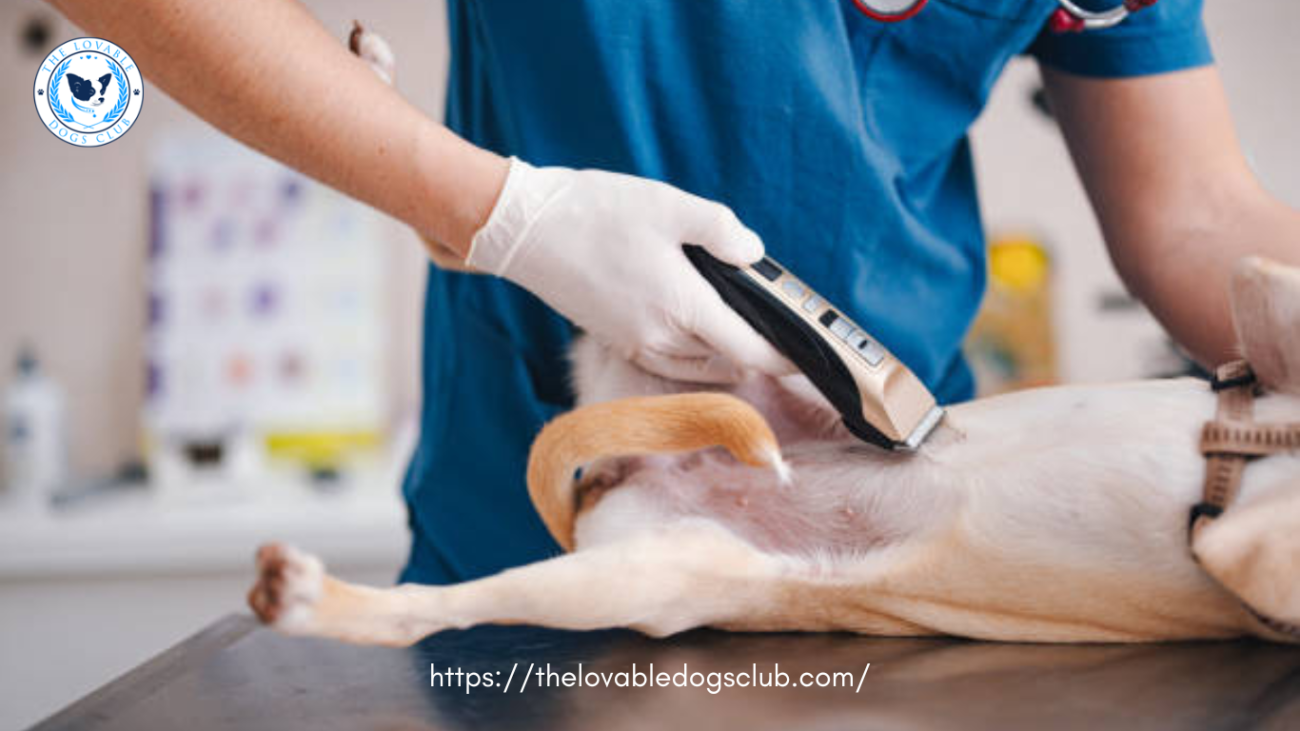During flea season, many dog owners are asked about shaving or not shaving their dogs. Some think it’s helpful to shave a dog for fighting against fleas, while others attribute this concept as just a myth. Is there any truth in it?
This might be true of dog shaving because it can help reduce fleas on its body, making them visible and providing ease of treatment. Whether that would work depends on how severe the infestation is and how effective your treatment choice would be. Read to find out if, during flea season, grooming significantly eliminates the flea infestation in dogs.
Will Shaving My Dog Help Eliminate Fleas?
If your dog is infested with fleas, shaving will help reduce some of the sores on their skin due to severe infestation and fat. Another way to treat the problem of parasites is by doing a dog’s hair cut in. The heat breaks down some of the natural defences that adult fleas have, exposing them so they can be detected and removed.
But remember, do not shave your dog down to the skin. Shaving them completely bald can make it easier for adult fleas to get inside their body, which could cause infections or other issues.
Remember, shaving in itself is not an answer, especially when your dog’s immune system is low due to disease or old age. To eliminate flea infestation, supplement the shaven hair with oral or topical medications.
What’s the Quickest Way to Eliminate Fleas?
There are numerous effective methods to eliminate fleas from your pets and home – so you can opt for the one that suits your and your pet’s lifestyle. Here are some common yet practical methods put into use for removing unwanted flea infestations:
Employ Topical Flea Treatment
The most common and effective way in which people use to get rid of fleas is by using chemical treatments. Chemical flea treatments can be bought over the counter at your local pet store or veterinarian. Of all the different choices available, Frontline Plus comes out as a popular one. This treatment is applied directly to your dog’s skin, usually between their shoulder blades, so they can’t lick or scratch it. It quickly begins killing adult fleas upon application. Take care of sensitive dogs and puppies because of its potency that could even handle the most stubborn infestations. Almost all fleas should have been killed within 6 to 24 hours after application.
Give Your Dog a Bath
Bathing your dog is also great for removing these parasites if necessary. If it’s awful, you may have to clean your dog twice or even three times because of scratching and heat rolling in the dirt. Use a flea-formulated dog shampoo that is created to kill and get rid of the flea infestation. Most of these shampoos also leave a residual, which wards off the fleas, thus reducing re-infestation. Leave the shampoo in your pet for at least five to 10 minutes before rinsing it off for best results. After rinsing, most, if not all, of the fleas should be eliminated.
Try Oral Flea Medication
Another way of eliminating fleas is through oral drugs. These are chewed and enter your dog’s bloodstream, working from the inside out in killing hidden fleas on them or outside their body. Oral medications act quickly, some within 48 hours of administration, but most kill only the adult fleas on your pet. Some oral treatments also work with flea eggs and larvae, preventing other harmful infestations like heartworms. So, if your dog has other underlying issues or is on any other medication, check with a veterinarian or pharmacist, as there could be a possible drug interaction. Always read the label of the medicine before giving it.
Options for flea collar
These collars are very effective against fleas and can be used in combination with other methods. If you do not want chemical treatments on your dog’s skin, go for these flea collars. These emit chemicals that kill adult fleas along with the eggs and, in the process, break the flea cycle. In the case of sensitive skin dogs, flea collars are a better choice for their lesser risks. However, they may take longer to produce noteworthy results and may need up to three weeks. Most pet owners opt for a flea collar in combination with other treatments like bathing to have an all-rounded approach towards controlling fleas.
Why is My Dog Afflicted with Fleas?
Dogs can acquire fleas from anywhere, and a few typical sources to look for are mentioned here. Following are essential habitats to avoid so that your dog is not vulnerable to flea bites:
Dog Runs and Parks:
Dog parks can be prime locations for your dog to encounter fleas, especially when other dogs are present. It’s a good idea not to take your dog in these areas until you’ve treated it with a vital flea treatment like Frontline Plus or Advantage II to kill any adult fleas he might encounter at the park.
Used Dog Beds or Furniture:
If you have just bought used dog beds or furniture, then it’s better to clean and disinfect them first. There are a lot of pesticides for furniture that probably kill fleas as well as other pests. Lastly, vacuum the furniture or sanitize it thoroughly using a wet vacuum. Fleas can readily infest upholstered items like mattresses and couches, so ensure they are free of flea eggs and larvae before allowing your dog to use them.
Your Own Backyard:
Your backyard may look well-kept and pest-free, but on a closer look, it may be harboring fleas. Especially if your dog spends long periods lying in the grass or on the patio, checking his fur for fleas every time he returns indoors is essential.
Groomers or Kennels:
Dogs groomed frequently or placed in kennels can easily contract fleas from other dogs and improperly cleaned equipment. Ensure your dog is treated with a potent topical medication before going to such places and ask the salon manager about their canine treatment policies.

Traveling:
It is essential to check for fleas before and after every trip, especially when traveling aboard public transport or flying your dog on an aircraft. If you go into nature or are camping with your dog, pack a natural bug spray and comb your dog well when you return home to make sure no bugs are hiding in his fur.
Carpets and Rugs:
Sometimes, dogs can unknowingly bring fleas into the home, i.e., on their fur or even in crates and deposit eggs or larvae that turn into new generations of pests. Deep steaming carpets and rugs once a week is a good prevention measure.
Is Shaving Dogs Cruel?
One of the most common questions among many dog owners is when to shave their dogs, especially during the warm months. Shaving can help relieve a little bit of heat but on an overall scale since most dogs have a natural shedding that helps regulate body temperature. Double-coated breeds, like Border Collies, German Shepherds, Golden Retrievers and Siberian Huskies, have an outer coat and undercoat.
The outer coat usually is lighter in color while the inner layer is darker, which helps to keep them well insulated in all weathers – hot or cold. Their fur also protects from pests, like fleas, so shaving them can make infestations harder to spot.
It is best to consult your veterinarian to decide whether giving your dog a shave will be in their best interest, particularly if there are parasite concerns. The significant advantage of not shaving the coat of one’s dog is that it protects against sun damage and skin problems.
If you shave your dog’s coat, trim it no shorter than one inch. This helps prevent a dog from heatstroke, sunburn, and skin problems. Other shaving alternatives are to regularly brush, bathe and cut the hair around the stomach and legs, as this will help keep your dog cool.
Do Dogs Get Upset When They’re Shaved?
In the grooming world, dogs are much like babies and small children. Some will be more tolerant than others, but all appreciate a soft touch from someone they trust.
You may want to try a test spot on your dog before you shave him entirely so that he has an appetite for it. You may also want to be present with your pet when it is being done and not leave the animal at the groomer all day.
The main thing is to be patient, take your time, and ask advice from other dog owners on what they did and what worked best for their dogs. Please be cautioned that your dog will feel a little sensitive or uncomfortable after being shaved since this experience will differ from their usual fur. Some dogs may feel anxious, depressed or lifeless after being shaved, especially when the process was done wrongly or not advised by a pet professional.
If you are worried that your dog looks down or depressed just because he has been shaved, it is always essential to go and see a vet. They can advise on the best way to deal with your dog’s emotional well-being and how frequent grooming or shaving should be done to make it comfortable without becoming anxious.
Conclusion
Shaving a dog as a remedy to eliminate fleas does not make sense. Fleas live in the fur, not the skin, so shaving isn’t an answer to your problem. It could make it worse by burning him and causing other issues with his skin from being exposed to sunlight. Use vet-recommended flea treatments and preventative measures regularly – collars or spot-on treatments are acceptable. Regular grooming can also help identify and remove fleas. Consult your veterinarian for safe and appropriate flea control methods, as shaving your dog can do more harm than good.

